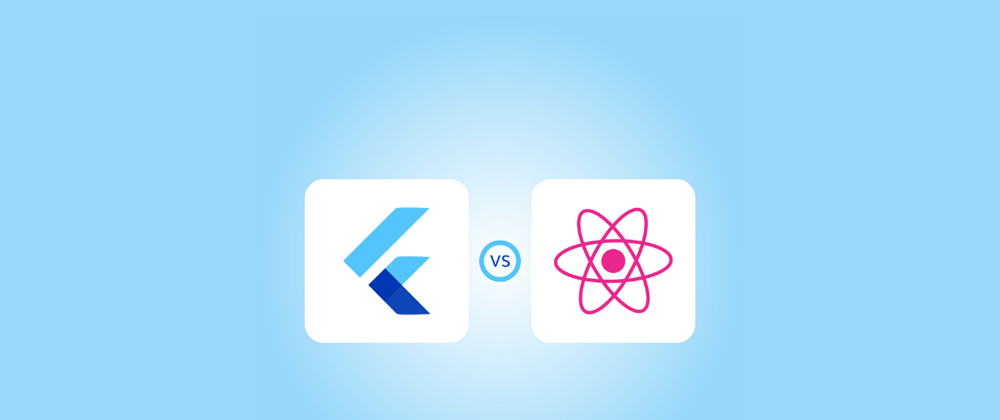In today’s ever-evolving digital world, the criteria of the functional, as well as the powerful mobile application, has become mandatory for all the shapes and sizes of businesses. The choice of the right technology framework is vital for building a successful mobile application, be it iOS or Android.
The purpose of the blog post is to identify the right cross-platform app development framework comparing the significant factors like performance, user experience, ease of development, convenience, learning curve, as well as many other factors. So, this blogpost will reflect the comparison of React Native and Flutter in the detailed form.
React Native Vs. Flutter: Stepping Into The Comparison Battle
Both React Native, as well as Flutter are proving to be the viable options for the development of cross-platform mobile applications. However, each of them come with their range of advantages as well as limitations. Now we are stepping forward to the comparison for giving a detailed overview.
Introduction to React Native
React Native is a popular component library that runs on the JavaScript. The prime focus on the React Native is the rendering of the applications for delivery of the compatibility with the Android as well as ios. React Native is written with the combinations of the JavaScript as well as the XML mark-up language, which is also referred to as the JSX. We can state that the production-ready type of applications can be easily built with the help of React Native.
Introduction to Flutter
On the other hand, Flutter is also an open-source mobile UI Framework widely used to develop native applications. Google has created Flutter. Flutter is now commonly addressed in the form of the enhanced user interface toolkit that utilizes the norms for building a cross-platform application with the help of the single code base. It also starts providing accessibility to the development of the expressive as well as a flexible user interface that drives the native performance. In addition to all these, you will find that Flutter is also quite compatible with the native ARM machine course that uses the default native compilers.
Market Share Comparison: React Native Vs. Flutter
According to the survey report of the Global developers published in Statistica, approximately one-third of the total application developers of mobile applications use the cross-platform frameworks while the rest are working with the native Technologies. The percentage of the React Native developer is around 42% of all the cross-platform application developers. React Native 0.60 is the latest stable version of the platform.
At present, the market share of React Native is 11.71% for the business and industry websites, 15.79% for the social media websites, 9.40 % for the entertainment websites, and 6.19 % for the other internet sites.
On the other hand, there are around 50 million downloads, with around 10 million active users every day of Flutter.
Popular Apps Developed With React Native and Flutter
Some of the most amazing applications that have been already built with the help of React Native are like Bloomberg, scope, Myntra, discord, Instagram, Uber eats, to name a few.
There are plenty of innovative applications that use Flutter; some of them are like Google ads, Alibaba, Hamilton, Musically, Coach yourself, Reflectly as well as Hookle.
Learning Curve: React Native Vs. Flutter
The foundation of Flutter is the Dart language, which is made by Google. On the other hand, React Native is built with the use of JavaScript in the form of the base language. Over the years, Native React is gaining immense popularity due to the easy learning curve along with the widespread usage.
React Native Vs. Flutter Performance Comparison
React Native is working in the form of the marginally more memory-hungry type of the native applications. On the other hand, Flatter base memory usage is around 50% higher compared to native applications.
The Flutter applications are also coming much closer to match the native applications along with the CPU usage, whereas it is good to remember that the Native React application is still struggling to stay on the 30% of the CPU utilization.
Code Maintainability: React Native Vs. Flutter
When it comes to upgrading and debugging the code, it is a bit painful in the React Native. The actual reason is it starts interfering with the logic of the app, and thus it is slowing down the performance of the overall application. React Native has native components with the third party library dependency. When the third-party library components require maintenance, sometimes, they also affect the performance of the ongoing application.
On the contrary, the code maintenance of the Flutter application is quite convenient. It is so easy to spot the issues while crossing the external tools and implementing the third-party libraries with heads. There is a loading feature that immediately resolves issues while making changes in the Flutter app. These entities are also better compared to React Native.
React Native Vs. Flutter Comparing User Experience
React Native is known for offering the best user experience. Readymade React Native UI Kits and some valuable components like ScrollView fixed header, Pagination components, Activity indicators, Snap carousels are a great help for enhancing the overall UX across multi-platform.
Whereas Flutter also has elements, tools, customized widgets, and layered architecture to offer a rich user experience. Once you make yourself comfortable with Animation Builder, Stream Builder, and Future Builder, then the sky is the limit to customize your UI. When it comes to user experience comparison, Flutter has always been given the first preference because it required less code.
Wrapping Up
React Native is an ideal framework if you would like to build native as well as cross-platform applications. But, if your application required multiple iterations or if you are planning to build an MVP, then Flutter is a great choice.







Top comments (0)